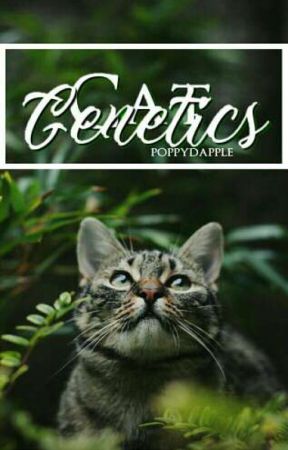This is f cking important okay so if you want to understand shit read it. Also note that I won't use all of these words, but they are still pretty important.
─━─
Words
HEREDITY - The passing traits from parent to offspring.
GENETICS - See heredity.
GENES - See heredity.
TRAITS - An inherited characteristic (eye color, fur color, height, etc).
DAM - The mother.
SIRE - The father.
DOMINANT GENE - "Dense" colors (red, black, chocolate, etc.) that overpower recessive colors when reproducing. Represented by capital letters.
RECESSIVE GENE - "Dilute" colors (cream, blue, lilac, etc.). Represented by lowercase letters.
ALLELE - Any of the possible forms in which a gene for a specific trait can occur.
GENOTYPE - Refers to the entire set of genes in a cell, an organism, or an individual.
PHENOTYPE - The set of observable characteristics of an individual.
HETEROZYGOUS - Like all words with the prefix hetero, this has to do with genes that are different.
HOMOZYGOUS - To have one each of two different alleles. (See alleles.)
PHAOMELANIN - A type of melanin found in red hair, but which, in our case, is red fur.
EUMELANIN - A type of melanin found in black or brown hair; but which, in our case, is black or brown fur.
PEDIGREE - The record of descent of an animal, showing it to be purebred.
Notes
• Kittens only inherit genes from their parents.
• Male kittens obtain genes from the dam. Male kits in the
litter will either turn out to be the dam's color or her dilute
form.
• Female kittens take one color gene from each parent. The
color of the female kits in the litter will always be a
combination of the dam's and sire's colors or the dilute
forms.
• To obtain the red genotype in female kittens, the sire must have a red/cream pattern/color. The dam must also demonstrate red/cream in some form.
• A kitten's pattern can be inherited from either parent.
• Only the immediate parents determine the color/pattern of a kitten. The color/pattern found in the pedigree of a kitten will not always directly affect the color/pattern of the kitten. One notable exception is the colorpoint gene.
• A dominant characteristic cannot skip generations.
• A cat displaying a dominant color must have a parent that expresses that dominant color.
• A recessive colored cat cannot reproduce a dominant color
offspring.
• To have a colorpointed offspring, the parents must inherit the colorpoint genotype.
• Two colorpointed parents cannot reproduce a non colorpointed offspring.
• The mating of a colorpointed cat and a non-colorpointed cat will not make a colorpointed kitten.
• A (non-silver) tabby must have at least one parent that carries the tabby/shaded gene. A silver tabby must have at leasat one parent that is tabby, smoked, or shaded.
• A cat with a white undercoat must have a parent with a white undercoat.
• A shaded parent cannot reproduce a smoked offspring, but a smoked parent can produce one if not mated with a shaded cat.
• A shaded offspring must have at least one parent that is shaded.
• Tortoiseshell and calico genes are mostly present in female cats, but appear occasionally in males but it does not make them sterile.
• A white cat must have white parents.
• A white cat breeds as both a white (which you see) and a masked color (which you don't see) and can produce based on both white and the unseen color/pattern. The masked color/pattern must be determined, based on the white's pedigree and the offspring produced in a controlled breeding, in order to effectively predict the color/pattern of the expected offspring. Interestingly, white kittens may have a small spot of color on top of their heads when born. This color should be noted as it is the color that the white is masking and the color that the cat will breed as when an adult. The spot of color may be visible for several months, but often disappears as the kitten matures.
• Genetics for solid white cats can affect the possible color/pattern of expected kittens in that the white parent may be masking the color/pattern needed to produce this result.
• Two longhair parents cannot reproduce a shorthair kitten.
• Two classic tabby parents cannot produce a mackerel, spotted, or ticked tabby kitten. A ticked tabby must have a ticked tabby parent. A mackerel or spotted tabby must have a mackerel, spotted, or ticked tabby parent.
• The dilute gene must be present in both the sire and dam's pedigree in order to produce a dilute offspring.
• The chocolate or lilac gene must be present in both the sire and dam's pedigree in order to appear in their offspring (and the same goes for cinnamon and fawn).
─━─
F cking done haha kms

YOU ARE READING
Cat Genetics
Non-FictionWarriors is about magical cats that don't give a fuck about genetics but I mean, ─━─ Did you not read the title I am pretty sure this book is self-explanatory. [ inspired by ashtonwilson69's "[WARRIOR CATS] Is this family possible?" ]
